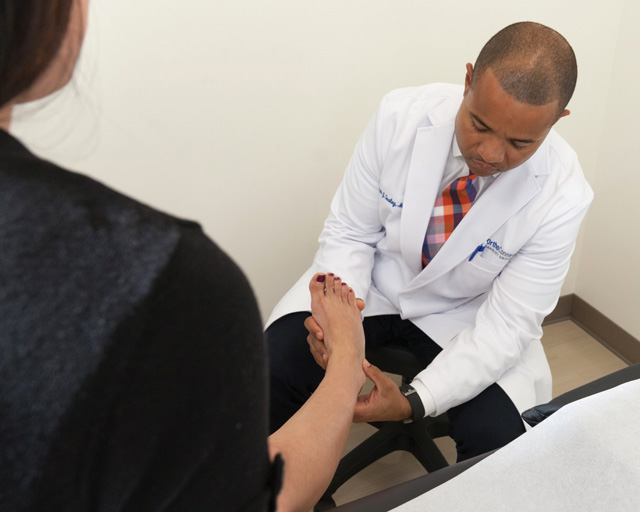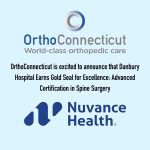Runners Take Heed! OrthoConnecticut Specialists Offer Solutions for Foot and Ankle Pain
As seen in Southbury’s HamletHub
Last week, The New York Times published an article about the uptick in solitary leisure focusing on Ridgefield and Darien Running Company and founder, Megan Searfoss.
With gyms closed for several months, running has picked up even more fans and exercise enthusiasts. If you’re one of them, take note of some common foot and ankle problems that may result from lacing up your sneakers and pounding the pavement for several miles.
Concerned about the impact a new running regimen may have? OrthoConnecticut’s Foot and Ankle Surgeon, Dr. Randolph Sealey, who is well versed in nonoperative as well as surgical management for foot and ankle problems, and OrthoConnecticut’s Podiatrist, Dr. Thomas Guglielmo answer some common questions posed by runners.

A: Dr. Sealey: As long as your running or walking mechanics are normal, and you can complete your usual distances, then you can continue running or walking through some pain. Another indication that running or walking through pain may not be problematic is that you are able to return to your next scheduled run at your normal timeline. Warning signs that you may need to see a doctor include abnormal running mechanics, limping, not being able to accomplish usual running distances, swelling and not being able to return to running despite rest, ice, compression and elevation. Do seek an evaluation by a specialty trained foot and ankle specialist should pain persist.
Q: Can orthotics help with my foot pain?
A: Dr. Guglielmo: Once the cause of the pain is diagnosed, then an orthotic can be utilized to protect or support the injured area. I use a multitude of different materials to make orthotics depending on what condition we are trying to correct or accommodate. Softer materials are used to reduce pressure and absorb shock while more rigid materials help to stabilize and provide support.
Q: Can I buy orthotics over the counter?
A: Dr. Sealey: As long as the foot alignment is not severe, then an over-the-counter orthotic is always my first recommendation. If the runner over supinates, it may be difficult to obtain an appropriate orthotic because most over-the-counter orthotics are made for pronators. If you have tried over-the-counter orthotics and your pain continues, this is an indication that you may need to see a doctor for a custom orthotic insert.
Q: Will a cortisone shot work?
A: Dr. Sealey: Cortisone can play a role in the resolution of foot pain, however, it is important that it is not the first option used to solve the problem. It is important to realize that cortisone readily treats an inflammatory problem and not a structural problem. Sometimes cortisone injections can cause more damage when they are used to treat a structural problem in a foot and ankle.
Q: Do you recommend any certain brand of sneaker?
A: Dr. Guglielmo: Most of the popular well-known brands of sneakers make different styles of shoes depending on your particular foot type. An individual with a high arch usually does best with a wider, softer shoe versus the individual with a flexible flatfoot –they do best in a motion control supportive shoe. I recommend they go to a running specialty store to be fitted with the proper shoe for their particular foot type. The brand is less important than the style. There are many excellent OTC arch supports available for under $75; the Powerstep and Superfeet brands are two that I often recommend.
Q: What about braces?
A: Dr. Guglielmo: I use off the shelf braces to stabilize the foot and ankle and limit motion. These devices reduce strain on the ligaments, tendons and joints to facilitate healing from acute injuries. Chronic long standing conditions often benefit from custom-made braces especially when surgery is not an option or when significant deformity is present. Custom braces are sometimes needed to correct foot and ankle deformities. An off-the-shelf brace is often not strong enough to address certain problems (ankle instability, posterior tibial tendon insufficiency).
Q: When is surgery recommended?
A: Dr. Sealey: Surgery is recommended when there is major structural injury to the bones, ligaments or tendons of the foot and ankle that will not heal on their own with rest. When an individual has significant functional disability, surgery may be the only option to correct the problem. If your pain does not significantly improve despite rest, ice, compression and elevation after a period of 4 to 6 weeks, then a specialty focused foot and ankle evaluation is recommended.
Dr. Randolph Sealey, is a board-certified, fellowship trained Foot & Ankle surgeon specializing in surgical and non-surgical care of the foot and ankle. Dr. Sealey has extensive training, ranging from simple hammer toe and bunion correction, to complex tendon and deformity correction. He sees patients in OrthoConnecticut’s Danbury and Southbury locations. More information on Dr. Sealey is available at https://ctbones.com/randolph-sealey-m-d
Dr. Thomas Guglielmo, is a board-certified Podiatrist specializing in medical and surgical foot care for adults and children. He sees patients in OrthoConnecticut’s New Milford and Litchfield offices. For more information on Dr. Guglielmo, visit https://ctbones.com/thomas-g-guglielmo-d-p-m.
To learn more about foot and ankle care or to schedule an appointment for an evaluation, please call the OrthoConnecticut office at 1-833-ORTHOCT (1.833.678.4628) or visit the website myorthoct.com.















